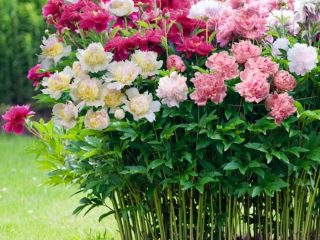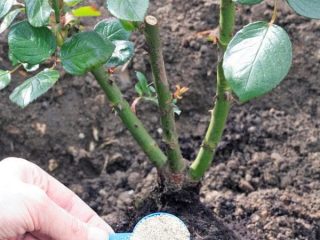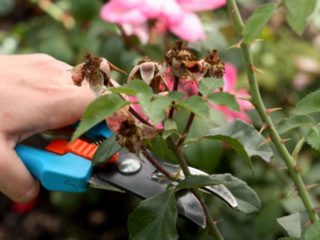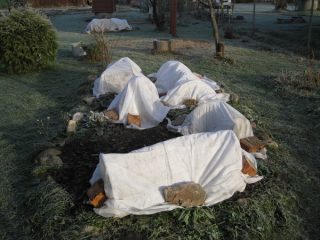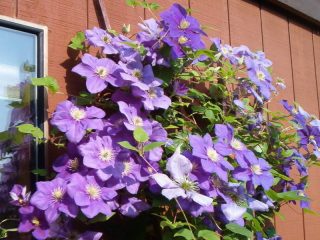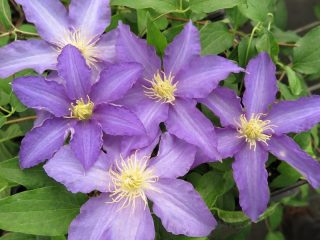Content
Perovskia has long won recognition among landscape designers for its luxurious, long-lasting flowering. It retains its decorative appearance for a long time and looks good in mixed flower beds. In order for the cultivation of Perovskia to bring the best results, it is important to learn the rules for planting the plant and the nuances of care.
Description and characteristics of Perovsky
Perovskia is a plant of the Lamiaceae family. It received its name in honor of Vasily Alekseevich Perovsky, who was the governor of the Orenburg province. There is also another equally common name - Russian sage.
This herbaceous perennial has straight, thin, but tough shoots. The leaves are narrow-lanceolate, pinnately dissected, elongated in shape. Color – green with a silvery tint. They contain aromatic substances that, when rubbed, emit a pleasant smell.The leaves are edible and are used as spices for meat and vegetable dishes.
Perovskia reaches a height of 60 cm to 100 cm. Flowers, depending on the variety, can be purple, blue or light blue. The flower is a tubular-bell-shaped calyx, covered with small short hairs, with two-lipped petals. The upper lip consists of 3-4 petals, the lower lip is almost solid or divided into two petals. Each flower has 4 stamens. The inflorescences are collected in panicles up to 40 cm long.
Russian sage gets along well with other plants and creates beautiful compositions in the flower garden. However, weeds should not be allowed to appear. Such a neighborhood has a bad effect on the condition of the plant.
When and how does Perovskia bloom?
Perovskia blooms on the shoots of the current year. Flowering time falls in July or August. Flowering duration is up to 2 months. Flowering resembles light fluffy clouds. It attracts bees and butterflies with its spicy, subtle aroma.
Winter hardiness of Perovskia

Perovskia does not have absolute frost resistance, since its natural habitat is the mild Asian climate
Some of its species tolerate low temperatures better, some worse. For example, Perovsky swan leaf has sufficient winter hardiness for cultivation in most territories of the Russian Federation. But in the central, northern regions and in the Moscow region, Perovskia may freeze. To preserve Russian sage in winter, you need to cover the root system with agrofibre or fallen tree leaves.The shoots can also be carefully bent to the ground and a frame can be built, then hermetically covered with agrofibre. If the shoots still freeze, you can cut them off in the spring. If the root has been sufficiently protected in winter, the plant will send out new shoots.
Types and varieties of Perovskia
Russian sage has dozens of species and varieties. They differ in the height of the bush, the shape and shade of the leaves, the thickness of the stem, the structure of the inflorescences, the shape and color of the buds and even the aroma. On the territory of the Russian Federation, the most popular are three types of Perovskia: swan-leaved, wormwood and the hybrid Little Spire.
Perovskia swanfolia
Features of this species are straight, thin gray shoots. Their height can reach 1-1.5 m. The foliage color is silvery-gray. Inflorescences are loose. Their length usually reaches 30 cm. Varieties of Perovskii swan-leaved differ from each other in the size of the bushes, the color of the buds and the color of the leaves. The flowering time is also slightly different.
The Blue Spire variety blooms with purple spikelets from June to September. The leaves are dissected, and the length of the shoots reaches 120 cm.
Blue Mist is the earliest variety. It has delicate, light blue inflorescences.
Perovskia swan-leaved variety Blue Steel is distinguished by long-lasting flowering, airy lilac inflorescences and a spicy sage aroma.

The average height of the bushes is 90 cm
Perovskia Little Spire
Little Spire is the result of the work of Dutch breeders. This is a hybrid of wormwood and swan-leaved Perovskia species. As a result of crossing, the breeders received a miniature bush, the height of which does not exceed 60 cm, while the inflorescence is 40 cm. Flowering turned out to be longer - from June to October.
The flowers are luxurious, bright purple, and the leaves are silvery and lacy.
Gardeners often use the Perovskia Little Spire hybrid as an alternative to lavender, because this plant is more adapted to harsh climates and frosty winters. Moreover, it is not easy to distinguish them from each other by appearance, color, and aroma.
Perovskia wormwood
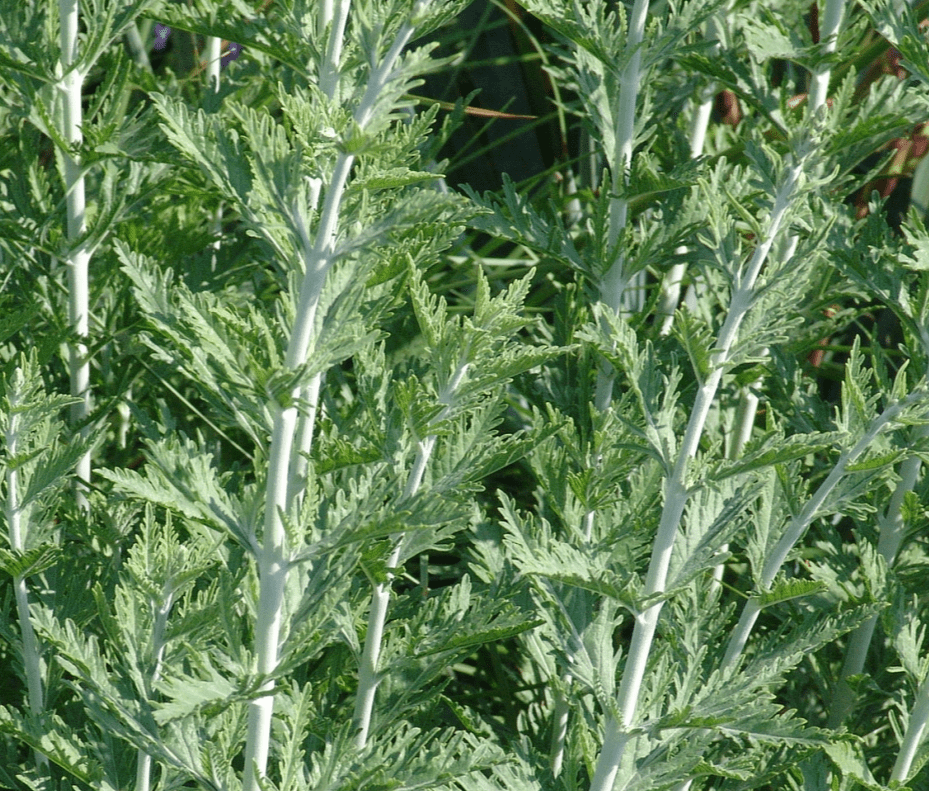
Perovsky wormwood usually grows in round-shaped bushes
They can be from 45 cm to 100 cm in height. The color palette of inflorescences is from purple to dark blue. The aroma of this species is unique - the plant smells like strawberries, so it is used in cooking as a valuable spice.
Planting Perovskia in open ground
In order for Russian sage to delight with its lush flowering and not cause problems, it is important to choose a sunny, well-ventilated place for planting. It is also advisable that the area be protected from the wind so that long shoots do not bend over. Otherwise, Russian sage will lose its decorative appearance.
A plant with a closed root system can be planted from March to November. In arid regions, autumn planting of Perovskia is recommended. The depth of the planting hole must be at least 40 cm and the width - 30 cm. It is recommended to place drainage in the form of sand or stones at the bottom of the hole to avoid stagnation of water. Russian sage grows well in poor alkaline soils, so there is no need to put compost or mineral fertilizers directly into the hole. The soil around the seedling needs to be trampled down and watered abundantly. It is very important to immediately shorten the shoots by a third so that the root system adapts better.
Caring for Perovskiy outdoors
For successful cultivation it is important to create Perov-specific conditions.It must be remembered that it develops well in moderately dry, drained soils and does not tolerate stagnant water. It should be watered only when the soil dries out. This plant is great for the garden or dacha, which you don’t get to visit very often. It withstands long-term drought thanks to its powerful, deep root system. Also, Russian sage does not need regular feeding. The only measure that can be taken is to maintain the alkaline balance of the soil. This event is only necessary for owners of plots with acidic or neutral soils.
In order for Russian sage to maintain its impeccable appearance throughout the season, it needs periodic pruning. It is important to understand that the plant is a subshrub and the lower shoots become lignified and have significantly less foliage. The bush seems loose and sloppy.
If you skip spring pruning, Russian sage will send out new shoots on old stems. They will grow long and heavy, causing the bush to fall apart and be unable to maintain its shape.
Pruning needs to be done annually. It is recommended to do this no earlier than April, since the growing season for Perovskia begins quite late. In autumn, pruning should not be done so as not to deprive the plant of additional protection from frost. In April, buds already appear, and from them you can clearly see which shoot is alive and which is frozen. Pruning should be on two buds. You should not spare the shoots, because this is the only way to get lush, abundant flowering. If there is a threat of return frosts in the growing region, Perovsky needs to be covered.
Diseases and pests
Perovskia is very resistant to viral and fungal diseases. Due to the special aromatic substance in the leaves, it is not popular with insect pests. However, unfavorable factors - excessive watering or prolonged rains - can cause root and stem rot, so it is important to provide the plant with good drainage when planting.
How to propagate Perovskia
Perovskia propagates very well both by seeds and cuttings. But Russian sage cannot be propagated by dividing the root, as this can lead to the death of the mother bush.
Growing Perovskia from seeds
It is recommended to stratify the seeds before sowing. To do this, you need to place them in moist soil and put them in the refrigerator for 20-30 days. Light soil with vermiculite should be poured into seedling cassettes or containers. Place the seeds on the surface at a distance of 1 cm from each other and sprinkle with a little soil. Next, you need to carefully moisten the crops using a spray bottle or syringe. The seedling container must be hermetically covered with film and ensure the air temperature is not lower than +22 degrees. After the shoots appear, you can open the film for 10 minutes for ventilation. After the first true leaves appear, the plant can be picked. It is better to plant young seedlings one at a time in a pot with a diameter of at least 10 cm. The growing temperature should be lowered to +18 degrees.
Perovskia cuttings
Cuttings are the easiest and most effective way to propagate Perovskia.You can take cuttings throughout the growing season. It is permissible to use Russian sage shoots that remain after spring pruning. The length of the cutting must be at least 7 cm, and it must end with an oblique cut. The lower leaves from the shoot must be removed. To stimulate root growth, you need to treat the cut with Kornevin. Next, the cuttings need to be buried 2 cm into moist sandy soil. It is advisable to create a humid microclimate for the planting material. To do this, you can cover it with a transparent lid, while ventilating it daily so that the cutting does not rot. After 5 weeks, check the presence of the root system of the cuttings. If strong roots appear, you can plant it in a spacious pot.
Perovsky in landscape design
Perovskia is a real salvation for gardeners from regions with hot and dry climates, because in such extreme conditions it thrives. This plant is universal in use. A large number of species and varieties of Russian sage allows you to choose a plant more suitable for climatic conditions. On the territory of Russia, Perovsky swan-leaved usually predominates in landscape design, since it winters well in unfavorable conditions and has a wide selection of different varieties. The dense and airy monoplantings of the lacy Perovskia swan-leaved variety Silver Blue look great. Russian sage also perfectly decorates mixborders, rockeries, and alpine slides.

Russian sage is suitable as a decorative fence dividing the garden into different zones
It can also be grown in containers and decorated with balconies, loggias or terraces.

Russian sage can be a suitable backdrop for bright and variegated flowers.
Its calm blue color will highlight the beauty of most summer annuals.
Conclusion
A photo and description of Perovskia will help you get to know this wonderful plant better. Silvery foliage and airy delicate flowers will adequately decorate your garden plot. Its ease of care will allow even a novice gardener to successfully grow Perovskia on his own.
Reviews from summer residents about Perovsky
